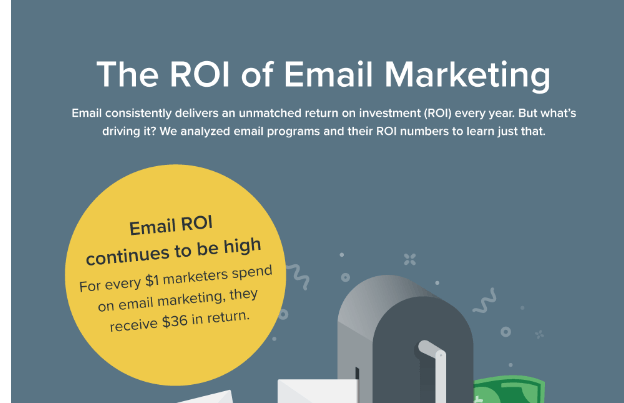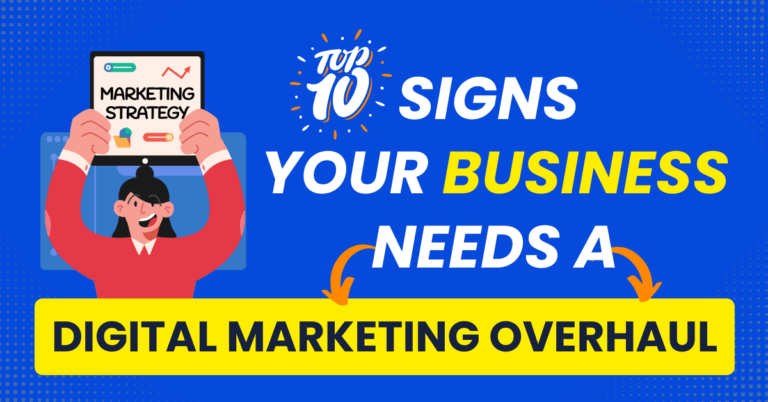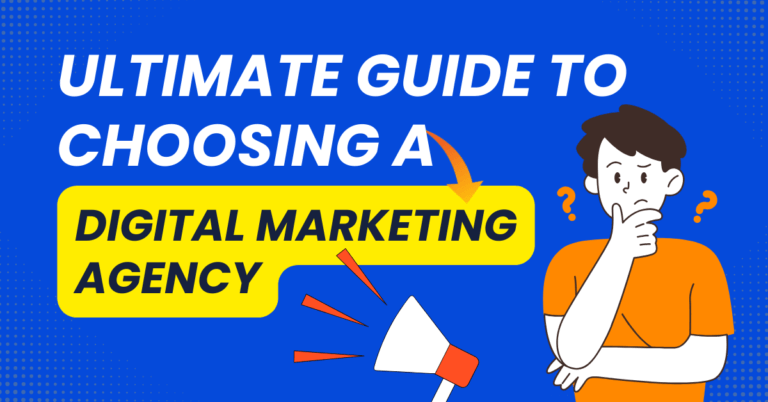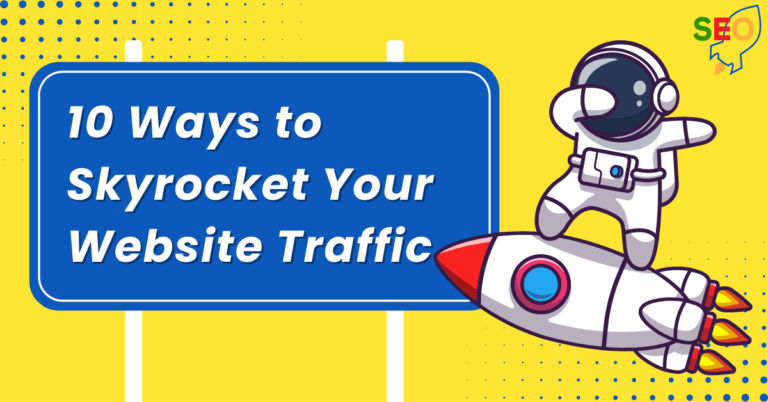If you’re here, you’re probably looking to boost your business’s return on investment (ROI) through savvy digital marketing strategies. And you’re in the right place!
Understanding ROI is crucial for any business owner or marketer because it measures the profitability of your investments.
But where do you start?
Well, we’ve got you covered! In this article, we’ll dive into some practical tips and tricks to help you maximize your digital marketing efforts and, ultimately, see a better return on your investment.
So, let’s get started!
Table of Contents
What is ROI in Digital Marketing?
ROI stands for Return on Investment. In digital marketing, ROI measures the profitability of your marketing efforts.
Essentially, it tells you how much profit you’ve made from your marketing campaigns relative to the amount you’ve spent on them.
Simply put, it’s about making sure that every dollar you spend on marketing is coming back to you with some extra cash.
Importance of ROI in Digital Marketing
Digital marketing plays a huge role in this. From SEO to social media, the digital world offers endless opportunities to enhance your ROI. Understanding ROI is crucial for several reasons:
- Measure Success: ROI helps you determine which marketing strategies are working and which aren’t. This insight allows you to allocate your budget more effectively.
- Optimize Strategies: By knowing the ROI of different campaigns, you can optimize your strategies to focus on the most profitable ones.
- Justify Spending: ROI provides concrete data that can justify marketing expenses to stakeholders and higher management.
- Improve Decision-Making: It aids in making informed decisions about future marketing efforts, ensuring you’re investing in tactics that yield the best returns.
ROI in Digital Marketing Formula
The formula to calculate ROI in digital marketing is:
ROI=(Cost of Investment / Net Profit)×100
Here’s how you can break it down:
- Net Profit: This is the total revenue generated from your marketing efforts minus the costs associated with those efforts.
- Cost of Investment: This includes all the expenses incurred during the marketing campaign, such as ad spend, salaries, and other related costs.
For example, if you spent $1,000 on a marketing campaign and generated $2,500 in revenue, your ROI would be:
ROI=(1000/2500−1000)×100=150%
What is a Good ROI for Digital Marketing?
A good ROI can vary depending on the industry and the specific goals of your campaign.
However, a general benchmark is that a positive ROI, where you earn more than you spend, is always desirable.
- Industry Average: Typically, an ROI of 5:1 ($5 earned for every $1 spent) is considered good. An ROI of 10:1 is excellent.
- Campaign Goals: For brand awareness campaigns, the ROI might be lower because the goal is not immediate sales but long-term engagement and brand recognition.
- Market Conditions: Factors like market conditions, competition, and the nature of the product or service can also impact what is considered a good ROI.
How to Improve ROI in Digital Marketing?
Improving your ROI in digital marketing is all about making smarter decisions that maximize your return while minimizing your investment.
It involves leveraging data-driven insights to fine-tune your strategies, optimizing your campaigns to target the right audience, and continually testing and adjusting your tactics for better performance.
Here are a few strategies to help you get started:
1. Cost-Effective Strategies
Boosting ROI doesn’t always mean spending big. Digital marketing often costs significantly less than traditional marketing.
Some cost-effective digital marketing channels allow you to reach a large audience without breaking the bank.
Here are some cost-effective strategies that can make a significant impact:
Content Marketing
Creating valuable content doesn’t have to break the bank. Blogging, infographics, and videos can drive traffic and engage your audience.
According to Content Marketing Institute, companies with blogs see 55% more website visitors.
Social Media
Leverage social media platforms to reach and engage your audience. It’s an affordable way to build brand awareness and foster customer relationships.
Sprout Social reports that 73% of marketers believe social media has been somewhat or very effective for their business.
Email Marketing
Email marketing remains one of the most cost-effective ways to boost ROI. It offers a high return on investment, with an average ROI of $36 for every $1 spent, according to Litmus.

SEO
Investing in SEO improves your site’s visibility without ongoing ad spend. As mentioned earlier, organic search drives 53% of all website traffic BrightEdge.
User-Generated Content
Encourage your customers to create content for you. This not only builds trust but also reduces content creation costs.
Social Media Today highlights that user-generated content can increase engagement by up to 28%.
By focusing on these cost-effective strategies, you can maximize your ROI without stretching your budget.
3. Improved Analytics and Reporting
Understanding your digital marketing efforts is crucial for boosting ROI. Here’s how improved analytics and reporting can help:
Tracking and measuring performance is vital for optimizing your digital marketing efforts. It helps you understand what’s working and what needs improvement.
Data-Driven Decisions
According to Invoca, 87% of marketers say data is their company’s most under-utilized asset.
Advanced analytics tools provide insights into what’s working and what’s not. With clear data, you can make informed decisions rather than guessing.
Performance Tracking
Effective reporting allows you to track key metrics like website traffic, conversion rates, and campaign performance.
According to Moz, metrics like conversion rate, click-through rate (CTR), and customer acquisition cost (CAC) are essential for evaluating your marketing success.
Tools like Google Analytics offer in-depth reports on user behavior and traffic sources, helping you adjust strategies in real-time Google Analytics.
ROI Measurement
Better reporting helps you measure ROI accurately. By tracking which channels and campaigns deliver the best results, you can allocate your budget more efficiently.
Econsultancy emphasizes that 50% of marketers say measuring ROI is the most critical part of their digital strategy.
Identifying Trends
With improved analytics, you can spot trends and shifts in user behavior. This allows you to adapt your strategies to meet evolving needs.
Bain&Company notes that companies using advanced analytics are 5 times more likely to make faster decisions than their competitors.
There are various tools and metrics to monitor your ROI in digital marketing. Google Analytics, for example, provides detailed insights into website traffic and user behavior.
By leveraging enhanced analytics and reporting, you can refine your strategies and boost your ROI. For a deeper dive into analytics, check out Google Analytics Academy.
4. Personalization and Customer Engagement
Personalized content significantly boosts customer engagement. Tailoring your messages to individual preferences makes your audience feel valued and understood.
Examples of personalized marketing techniques include email marketing and dynamic ads. Personalized emails can deliver six times higher transaction rates, according to Experian.
Dynamic ads, which adjust content based on user behavior and interests, can also dramatically improve engagement and conversion rates.
Personalization is key to boosting your ROI by enhancing customer engagement. Here’s how to make it work for you:
Tailored Experiences
Personalizing your content and offers based on user behavior can significantly increase engagement.
According to Epsilon, 80% of consumers are more likely to make a purchase when brands offer personalized experiences.
Dynamic Content
Use dynamic content on your website and emails to show relevant information to different segments of your audience.
For instance, recommending products based on past purchases or browsing history can drive conversions.
Salesforce reports that personalized emails have 29% higher open rates and 41% higher click-through rates.
Customer Feedback
Engage with your customers through surveys, reviews, and social media to gather feedback. This not only helps you improve your offerings but also makes customers feel valued.
Zendesk notes that 74% of consumers expect companies to understand their needs and expectations.
Loyalty Programs
Implementing loyalty programs can boost engagement and repeat purchases. Personalized rewards based on user behavior and preferences encourage customers to stay connected with your brand.
According to Bond Brand Loyalty, 79% of consumers say they are more likely to continue doing business with a company that offers a loyalty program.
Real-Time Interaction
Utilize chatbots and live chat to provide instant support and personalized interactions. This can enhance the customer experience and drive higher satisfaction.
Gartner predicts that 75% of customer service interactions will be powered by AI chatbots by 2027.
Personalization and engagement are powerful tools for increasing your ROI. For more tips on implementing these strategies, check out HubSpot’s Guide to Personalization.
5. Higher Conversion Rates
Boosting conversion rates is essential for improving ROI.
Optimizing conversion rates (CRO) involves strategies like A/B testing, improving website load times, and creating compelling calls to action (CTAs). These techniques help turn visitors into customers more effectively.
For instance, Moz highlights a case study where an e-commerce site increased its conversion rate by 35% through A/B testing different landing page designs.
Another example is Shopify sharing how simplifying the checkout process can significantly boost conversion rates.
Here’s how you can achieve higher conversion rates through effective digital marketing strategies:
Optimized Landing Pages
Ensure your landing pages are designed to convert visitors into leads or customers. A clear call-to-action (CTA), compelling headlines, and a user-friendly layout are crucial.
Unbounce reports that optimized landing pages can increase conversions by up to 30%.
A/B Testing
Regularly test different versions of your web pages and ads to see what performs best. A/B testing helps you understand which elements drive more conversions, whether it’s a CTA button color or a headline.
Optimizely highlights that A/B testing can improve conversion rates by up to 49%.
Clear Value Propositions
Communicate your value proposition clearly.
Let your visitors know why they should choose your product or service over others. A strong value proposition can increase conversion rates significantly.
According to Neil Patel, a clear value proposition can boost conversions by 100% or more.
Personalized Offers
Tailor offers and recommendations based on user behavior and preferences. Personalized experiences make users feel valued and more likely to convert.
McKinsey reports that personalized marketing can increase conversion rates by 10% to 20%.
Mobile Optimization
Ensure your website is mobile-friendly. With more users browsing and shopping on mobile devices, a seamless mobile experience is crucial for higher conversions.
Google states that mobile-friendly sites see 60% higher engagement rates than non-mobile-friendly sites.
By focusing on these strategies, you can boost your conversion rates and see a significant improvement in your ROI.
For more on improving conversions, check out Crazy Egg’s Conversion Rate Optimization Guide.






